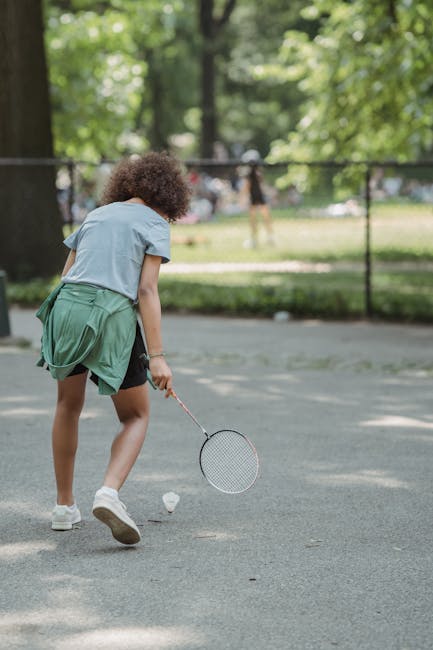How to Select a Badminton Racket for Different Playing Conditions
Choosing the right badminton racket is crucial for enhancing your performance on the court. Whether you’re a beginner or a seasoned player, the conditions you play in—be it indoors, outdoors, or at varying altitudes—can significantly impact your game. Understanding how to select a badminton racket tailored to these conditions will not only improve your play but also help prevent injuries. Let’s delve into the specifics of selecting the perfect racket for different playing conditions.
Understanding the Basics of Badminton Rackets
Before selecting a badminton racket, it’s essential to understand its basic components. A badminton racket consists of a frame, string bed, grip, and shaft. The frame’s weight, the material of the shaft, and the type of grip are all factors that can influence your game. According to Badminton World Federation, the ideal racket weight for most players ranges between 80-100 grams. Heavier rackets offer more power, while lighter ones provide better control and maneuverability.
Racket Weight and Balance
The weight and balance of a racket play a significant role in its suitability for different playing conditions. A racket’s balance is categorized into three types: head-heavy, even-balanced, and head-light. Head-heavy rackets provide more power and are ideal for offensive play. Even-balanced rackets offer a mix of power and control, suitable for all-round play. Head-light rackets provide quick maneuverability, making them perfect for defensive play and rapid exchanges.
Selecting a Racket for Indoor Conditions
Indoor badminton is the most common form of the game, with a controlled environment that allows for consistent play. When selecting a racket for indoor conditions:
- Focus on Control: Opt for an even-balanced racket to maintain control and precision. Indoor courts often enable faster rallies, requiring quick reactions.
- String Tension: Choose a string tension between 20-24 lbs for optimum performance. Higher tension offers more control, whereas lower tension provides more power.
- Material: Graphite rackets are popular for their lightweight and durability, making them ideal for indoor play.
The Role of String Type
The type of strings used can affect your performance significantly. Multifilament strings are known for providing excellent power and a soft feel, ideal for indoor play where precision is key. Conversely, monofilament strings, being more durable, are better for players seeking longevity.
Adapting to Outdoor Playing Conditions
Outdoor badminton, often played recreationally, presents unique challenges such as wind and uneven surfaces. Selecting the right racket can help mitigate the effects of these conditions:
- Wind Resistance: Choose a heavier racket to counteract wind resistance. A head-heavy racket can provide the necessary power to drive the shuttle through gusts.
- Durability: Opt for rackets with reinforced frames to withstand the outdoor elements.
- Grip: A tacky grip can prevent slipping, crucial in outdoor settings where sweat and humidity can affect your hold on the racket.
Weather Considerations
Weather conditions like heat and humidity can affect the racket’s string tension. It’s advisable to check and adjust your racket’s tension more frequently when playing outdoors to maintain optimal performance. According to a study by the Journal of Sports Sciences, tension loss can be as high as 10% in humid conditions.
Selecting a Racket for High-Altitude Play
Playing badminton at high altitudes presents its own set of challenges. The air is thinner, which affects shuttle speed and flight. Here’s how to adapt:
- String Tension: Opt for lower string tension to increase power, compensating for the decreased shuttle speed at high altitudes.
- Lightweight Rackets: Lightweight rackets can enhance your reaction time and adaptability in these challenging conditions.
- Material: Consider using a racket with advanced aerodynamic designs to reduce air resistance and enhance speed.
Case Study: Professional Players
Many professional players adjust their rackets based on the altitude of the tournament location. For instance, during competitions in high-altitude cities like Denver, players often switch to rackets with custom string tensions to maintain their performance levels.
Final Tips for Selecting the Right Racket
Here are some actionable tips to remember when choosing your badminton racket:
- Test Before Buying: Whenever possible, test different rackets to find the one that feels most comfortable and suits your style.
- Consult Experts: Speak with coaches or experienced players to get recommendations based on your skill level and playing environment.
- Keep Your Racket Maintained: Regularly check your racket for wear and tear and replace strings as necessary to ensure consistent performance.
Conclusion
Selecting the right badminton racket is a crucial step towards optimizing your performance in various playing conditions. By understanding the impact of different environments—whether indoor, outdoor, or at high altitudes—you can make informed choices that enhance your game. Remember, the best racket is one that complements your playing style while adapting to the conditions you face. With the right racket in hand, you’re well-equipped to improve your skills and enjoy the game to its fullest.
Top on Sale Badminton Racket Recommendation
